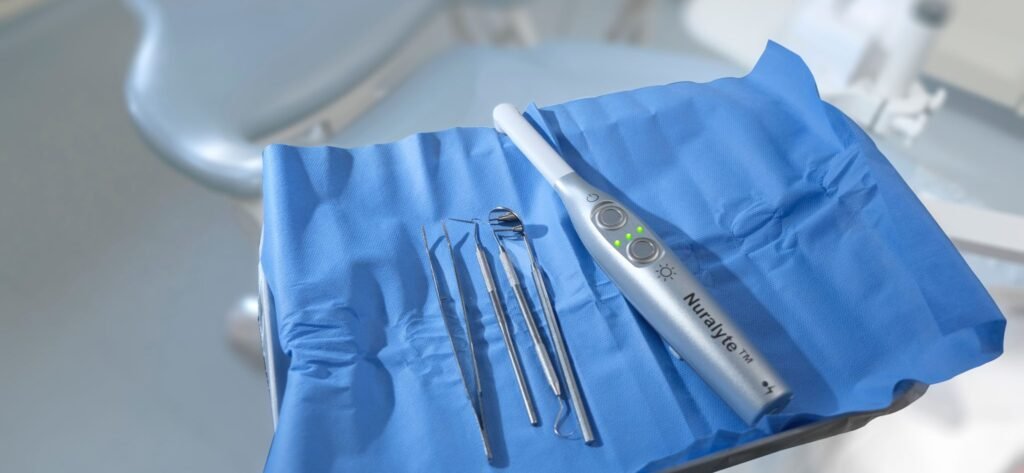Griffith University researchers have found that light-based technology that may accelerate healing and reduce pain in dental procedures—without relying on pharmaceuticals or injections. The device, called Nuralyte, out of Canberra City, Australia based startup Dentroid, uses patented multi-wavelength LEDs to stimulate cellular activity through a process known as photobiomodulation (PBM). By targeting mitochondria—the energy-producing structures inside cells—Nuralyte enhances respiration and activates genes linked to bone and collagen formation.
In lab studies, the device improved the function of bone-forming stem cells, suggesting potential applications in regenerating tissue around dental implants, periodontal sites, and post-surgical wounds. The stimulation is dose- and wavelength-specific, allowing for precise modulation of cellular behavior. Researchers believe this could lead to faster recovery times and better outcomes for patients undergoing invasive dental procedures.
Beyond healing, Nuralyte may also help manage pain. Previous trials have explored its ability to induce pre-emptive analgesia, potentially reducing or replacing the need for local anesthetic injections. This could be especially beneficial for patients with needle anxiety or those undergoing multiple treatments.
The research team, led by Professor Roy George and PhD candidate Simone Sleep, collaborated with Dentroid to develop and test the device. They’re now expanding studies to include 3D cell cultures and organoids—miniature tissue models that better replicate real-world biological environments. These advanced models will help evaluate how Nuralyte performs under conditions that mimic the complexity of human tissue.
The broader implications of PBM technology extend beyond dentistry. Because it’s noninvasive and drug-free, Nuralyte could be adapted for use in orthopedics, dermatology, and general medicine. It represents a shift toward regenerative therapies that work by enhancing the body’s own healing mechanisms rather than suppressing symptoms.
More info on Nuralyte: Dentroid website
Article from Griffith University: New technology shows promise for accelerating healing and managing pain in dentistry
Abstract in Journal of Biophotonics: Effects of Multiple Near-Infrared LEDs (700, 850, and 980 nm) CW-PBM on Mitochondrial Respiration and Gene Expression in MG63 Osteoblasts

